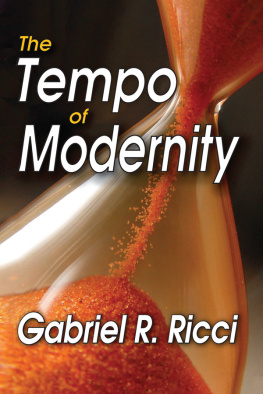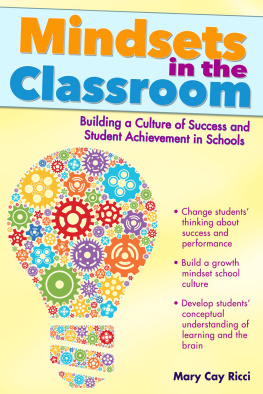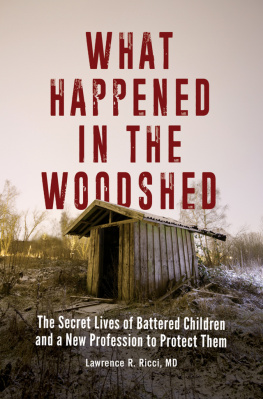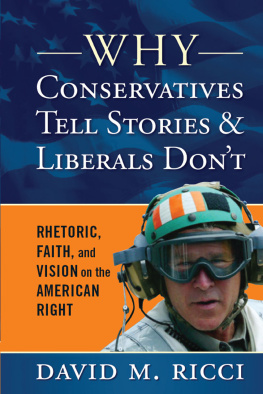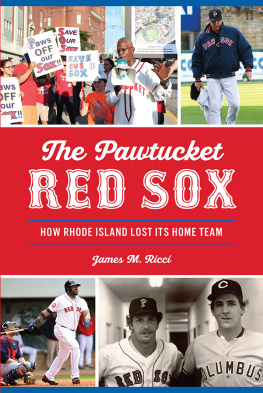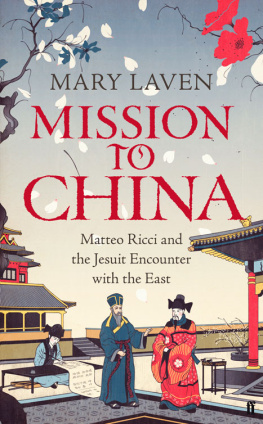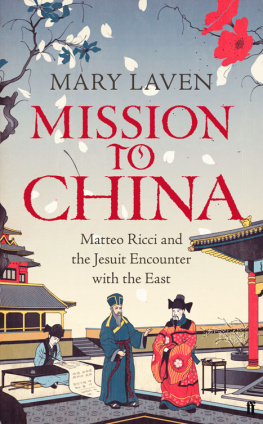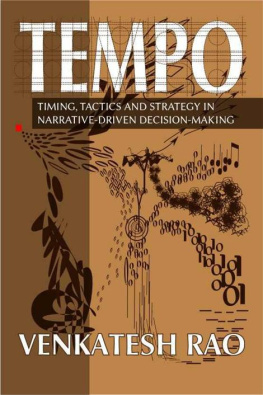Ricci - The Tempo of Modernity
Here you can read online Ricci - The Tempo of Modernity full text of the book (entire story) in english for free. Download pdf and epub, get meaning, cover and reviews about this ebook. City: London;New Brunswick;N.J, year: 2012, publisher: Routledge;Transaction Publishers, genre: Science. Description of the work, (preface) as well as reviews are available. Best literature library LitArk.com created for fans of good reading and offers a wide selection of genres:
Romance novel
Science fiction
Adventure
Detective
Science
History
Home and family
Prose
Art
Politics
Computer
Non-fiction
Religion
Business
Children
Humor
Choose a favorite category and find really read worthwhile books. Enjoy immersion in the world of imagination, feel the emotions of the characters or learn something new for yourself, make an fascinating discovery.
The Tempo of Modernity: summary, description and annotation
We offer to read an annotation, description, summary or preface (depends on what the author of the book "The Tempo of Modernity" wrote himself). If you haven't found the necessary information about the book — write in the comments, we will try to find it.
Ricci: author's other books
Who wrote The Tempo of Modernity? Find out the surname, the name of the author of the book and a list of all author's works by series.
The Tempo of Modernity — read online for free the complete book (whole text) full work
Below is the text of the book, divided by pages. System saving the place of the last page read, allows you to conveniently read the book "The Tempo of Modernity" online for free, without having to search again every time where you left off. Put a bookmark, and you can go to the page where you finished reading at any time.
Font size:
Interval:
Bookmark:

Gabriel R. Ricci

First published 2012 by Transaction Publishers
Published 2017 by Routledge
2 Park Square, Milton Park, Abingdon, Oxon OX14 4RN
711 Third Avenue, New York, NY 10017, USA
Routledge is an imprint of the Taylor & Francis Group, an informa business
Copyright 2012 by Taylor & Francis.
All rights reserved. No part of this book may be reprinted or reproduced or utilised in any form or by any electronic, mechanical, or other means, now known or hereafter invented, including photocopying and recording, or in any information storage or retrieval system, without permission in writing from the publishers.
Notice:
Product or corporate names may be trademarks or registered trademarks, and are used only for identification and explanation without intent to infringe.
Library of Congress Catalog Number: 2011041487
Library of Congress Cataloging-in-Publication Data
Ricci, Gabriel R., 1948
The tempo of modernity / Gabriel R. Ricci.
p. cm.
ISBN 978-1-4128-4291-4
1. Literature, Modern--Philosophy. 2. Time perception in literature.
3. Modernism (Literature) 4. Time perception. I. Title.
PN56.T5R53 2011
809.93384--dc23
2011041487
ISBN 13: 978-1-4128-4291-4 (hbk)
To Patricia and Matthew for old times sake
The present work is a study in the history of an enduring idea about time perception which informed literary and philosophical expression over the course of the first half of the twentieth century. The story stretches beyond the borders of this period because it is a perennial idea which defines the inner life of the mind and existence, but the manner in which it supplied a substratum for the twentieth-century literary imagination and substance for philosophical thinking produced a unique alliance between philosophy and literature at the time. This special union was forged by a new conception of time which supplemented, and, in some cases, supplanted the conventional sense of chronological time. This new interpretation of time pervaded the intellectual world but was grounded in nineteenth-century advances in the biological sciences, the ascendance of Hegelianism, and even stretches back to Augustines early meditation on time in Book XI of his Confessions. This innovative temporal mode is defined by the integration of the facets of time which congealed to produce a kind of faceted simultaneity. In between Augustine and his twentieth-century progeny, there were mystical incarnations of this sense of time which vividly entail the ideas of eternity and the existence of an infinite presence. This narrative provides only a secular view of this view of time, except for the special case of J. W. Dunnes idiosyncratic experiments which entailed conceptions of immortality and the existence of God. But, insofar as the twentieth-century thinkers presented here harken back to Augustines meditation, their thinking implicitly carries theological and spiritual consequences. But that can only be an incidental result of my account in this book.
In the way that we cannot accurately state that a European discovered the New World, I have discovered nothing new here. However, in linking together a set of thinkers who addressed this form of temporal consciousness, I illuminate a common intellectual preoccupation from the vantage point of a thought. The authors addressed in these essays do not together assemble the thought; it is the thought that produced a collective voice. This voice appears in the episodes outlined in each chapter, and they are framed by an introduction, which taps Joseph Franks explanation for the origin of new spatial forms in literature that displaced conventional temporal narratives, and an epilogue, which resurrects J. W. Dunnes peculiar dream experiments and theory of precognition. I use Franks seminal essay to draw comparisons between literatures adaptation of the new time sense and philosophys expression of the new compatibility between space and time, and I use Dunnes much debunked theory to demonstrate the continuity between literary form and philosophical speculation.
In, primarily, keeping to the first half of the twentieth century, I have selected authors who were clearly influenced by the new physics and the innovative idea of the timespace continuum. It is this seminal thought that feeds the philosophical and literary expressions of the elasticity of time; a time in which sequential and linear time gives way to an integration of time that reveals a holistic temporal structure in which the aspects of time are equally accessible, an expansion of ordinary time in which a second can be inflated into a year; an hour can be condensed into a fleeting second. In one way or another, each of the authors I discuss were influenced by this basic idea, even in the case of Wyndham Lewis who was publicly hostile to the attention time consciousness received; and even more vitriolic with the authors who promulgated the new vision of time. As in the case of J. W. Dunnes idiosyncratic view, this idea was widely criticized and dismissed as illogical. The special case of J. W. Dunne indicates the existential quality of this temporal experience. Deviating from ordinary consciousness, through which we have grown accustomed to experiencing reality in a linear way and in a spatially defined way, the experience of temporal totalities might seem like a psychological deviation. But those of us who experience what some have called chronic normalcy might find it difficult to fully understand a schizophrenic mood or disturbed state of mind grounded in personal experience.
There are some illustrations that I offer that may help illustrate the experience of temporal continuity, temporal flux, and the equiprimordiality of the facets of time, but I will furnish one now to hopefully bring the point home and predispose the reader to this integrative idea. I am indebted to a recent exchange with Irving Louis Horowitz, who has taken great pains to scour this manuscript, for supplying the evocative example in Jorge Luis Borgess Aleph, a short story from 1945 that provides a spatial view of infinity and explains the problem of discussing the ineffable and putting spatial simultaneity into words.
Borges is well known for having used alternative narrative structures. Commonly grouped with the genre magical realism, Borgess short stories explored nonlinear narration through the philosophical attention he gave to the experience of infinity and the elasticity of time. Borges accomplished this in Aleph through a depiction of a spatially construed infinity, which encompasses all points in the universe. As narrator and a character in the story, Borges explains how through such an encounter with the microcosm, perception and feeling are conflated to produce the experience of multum in parvomuch in little. At first skeptical of his literary associates claim that he houses the Aleph in his basement, Borges finds himself confronted with the problem of the mystics; that is, how to translate the limitless into words. To his amazement and awe, the infinity of points which the Aleph accesses appears to Borges as a simultaneity. Herein lays the narrators dilemma. What he must write down is a succession of words linked together in a syntactic and semantic logical array, but what he must communicate is a simultaneity that is analogous to a Leibnizian monad. Leibnizs monads were windowless and directed by a preestablished harmony, but Borgess Aleph is a window onto the cosmos. The narrative record of endless points of view would require a list equally long and beyond the mettle of a finite author. Still Borges takes a stab at such a list:
Next pageFont size:
Interval:
Bookmark:
Similar books «The Tempo of Modernity»
Look at similar books to The Tempo of Modernity. We have selected literature similar in name and meaning in the hope of providing readers with more options to find new, interesting, not yet read works.
Discussion, reviews of the book The Tempo of Modernity and just readers' own opinions. Leave your comments, write what you think about the work, its meaning or the main characters. Specify what exactly you liked and what you didn't like, and why you think so.

